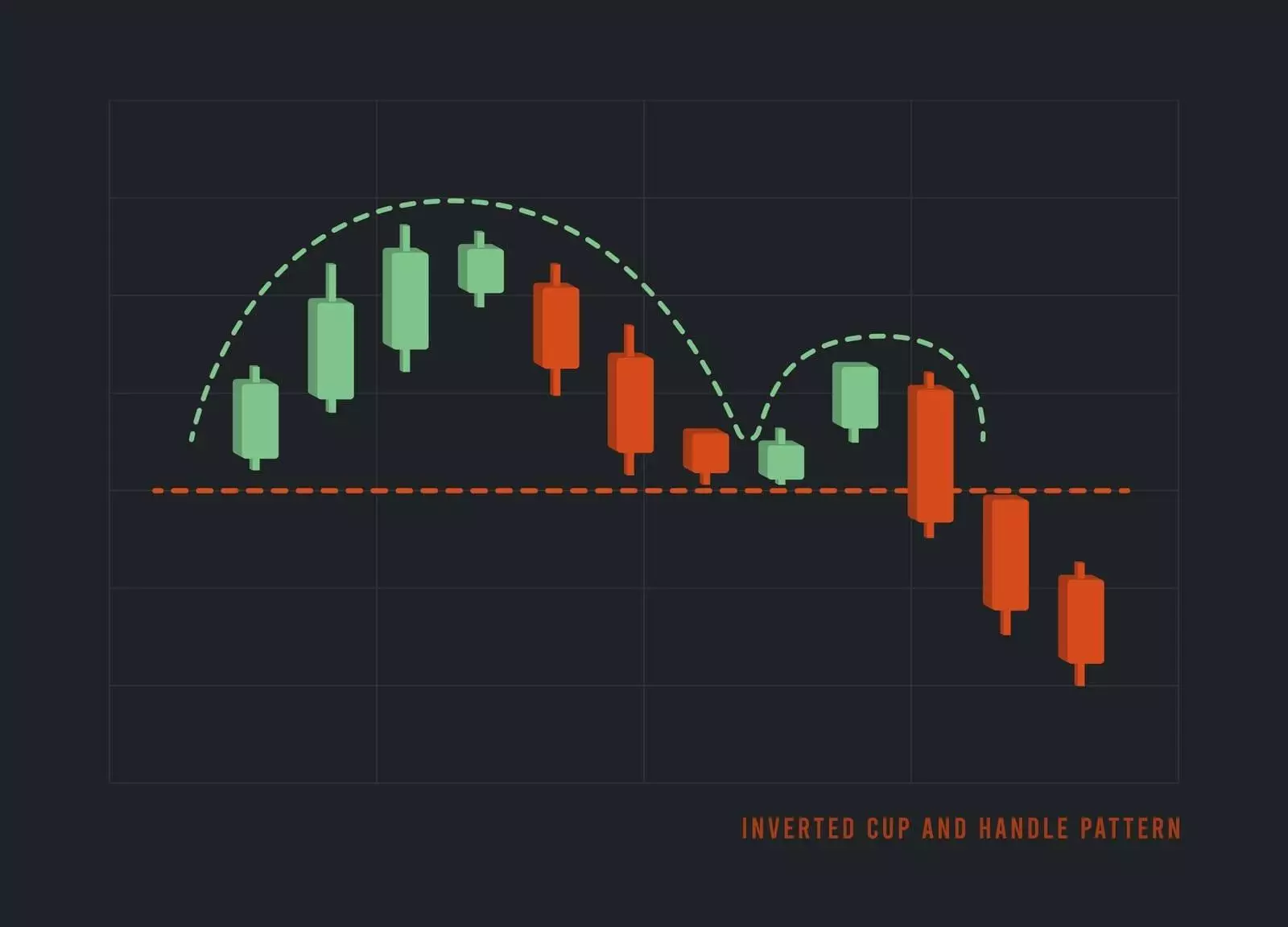As a passionate enthusiast of trading, I’m constantly scouting for strategies that could provide me an edge in the market. The inside day trading strategy has caught my attention due to its potential to detect significant shifts prior to their occurrence. Implementing this method could propel my trading skills to unmatched levels.
But, like any trading strategy, it’s essential to understand the ins and outs of inside day trading to fully harness its potential.
In this article, we’ll dive deep into the world of inside day trading and explore its intricacies. We’ll cover everything from the basics of an inside day to how to use this powerful strategy to identify high probability trade set-ups. Along the way, we’ll also look at various control measures to maximize profits and minimize losses.
So, buckle up and get ready to embark on a thrilling journey towards trading mastery.
Key Takeaways
- Inside day trading strategy can identify potential reversal points in the market and uncover hidden market sentiments.
- Inside the day candlestick pattern is when the trading range is fully within the range of the previous day, and it can be a continuation or a reversal pattern.
- Bullish inside day pattern occurs after a downtrend, signaling a potential reversal, while bearish inside day pattern occurs after an uptrend, suggesting a change in market direction.
- Effective control measures in trades include setting stop losses, determining optimal position sizes, and regularly re-evaluating and adjusting strategies to maintain strong trading performance.
Understanding the Basics of an Inside Day in Trading

In today’s discussion, we’ll be diving into the concept of an Inside Day in trading. We’ll focus on its definition and characteristics as a candlestick pattern. We’ll also explore the significance of the Inside Days in identifying market sentiments. We’ll learn how to distinguish between bullish and bearish Inside Day patterns.
So, let’s get started and unravel the intricacies of this essential trading tool!
Definition and Characteristics of an Inside Day Candlestick Pattern
You’ll notice an inside day candlestick pattern when the trading range is fully within the range of the previous day, signaling potential indecision in the market. I can spot this intriguing pattern on a daily chart. The high and low of a trading day are contained within the high and low of the previous day. An inside day candle pattern reflects the price action during that specific trading day. I can see it as a pause in the market’s momentum.
As a trader, it’s essential to keep an eye out for these patterns. They might show a shift in market sentiment or a potential reversal. So, when you come across an inside day, pay close attention to the story it tells about the market’s current mood. Be prepared to dive into the significance of inside days in identifying market sentiments.
The Significance of Inside Days in Identifying Market Sentiments
It’s like reading the tea leaves of the stock market: recognizing the significance of inside days can unveil hidden market sentiments and guide your trading decisions. An inside day occurs when the trading range of a security is entirely contained within the range of the previous day, which may show that market participants are uncertain about the future direction of the price trend.
This uncertainty can manifest as a continuation pattern, where the price trend maintains its trajectory, or as a reversal pattern, where the trend changes direction. To better understand the significance of inside days, let’s consider the following table:
| Market Condition | Inside Day Significance | Trading Implications |
|---|---|---|
| Uptrend | Continuation Pattern | Bullish |
| Uptrend | Reversal Pattern | Bearish |
| Downtrend | Continuation Pattern | Bearish |
| Downtrend | Reversal Pattern | Bullish |
| Sideways | Indecision | Neutral |
By analyzing the market sentiment surrounding an inside day, you can tailor your trading strategy accordingly. For example, if the market is on an uptrend and an inside day appears as a continuation pattern, it might suggest that the bullish sentiment is still strong, and you could consider maintaining or entering long positions.
If the inside day signals a reversal pattern in a downtrend, it could show a shift in market sentiment to a more bullish outlook, signaling a potential opportunity to enter long positions or exit short positions.
Now that we’ve grasped the importance of inside days in identifying market sentiments, let’s delve deeper into distinguishing between bullish and bearish inside day patterns.
Distinguishing Between Bullish and Bearish Inside Day Patterns
So, how can you tell the difference between bullish and bearish patterns for inside days? The key is to survey the trading chart pattern and look for specific clues that can help you determine the market direction.
Here’s what you need to keep an eye out for:
For bullish patterns:
- An inside day that follows a downtrend, signaling a potential reversal in the market direction.
- The inside days high and low are closer to the previous day’s high, showing that buyers are gaining control.
For bearish patterns:
- An inside day occurring after an uptrend, suggesting that the market direction might change course.
- The inside days high and low are closer to the previous day’s low, signifying that sellers are taking over.
By understanding these subtle differences in the inside day chart patterns, you’ll be well on your way to mastering the art of identifying bullish or bearish market sentiments.
Now that you know what to look for, let’s dive into how to use inside days for effective trade set-ups.
How to Use Inside Days for Effective Trade Set-ups

In today’s discussion, I’ll be sharing some practical tips on how to use inside days for effective trade set-ups.
We’ll dive into detecting breakout opportunities using inside day patterns, identifying potential reversal points with consecutive inside days, and applying inside day trading methods to diverse market scenarios.
By understanding these key points, you’ll be able to enhance your trading strategies and make more informed decisions in the market.
Detecting Breakout Opportunities Using Inside Day Patterns
You’d think spotting breakout opportunities using inside day patterns would be a piece of cake, right? Well, it’s not as simple as it seems, but with a keen eye and some practice, detecting these patterns can become second nature.
An inside day is a powerful trading tool, as it can signal potential breakout opportunities in the market. To spot these patterns, you’ll want to look for a day when the entire price range of a security falls within the previous day’s range, showing a pause in a trend.
By monitoring these inside days, you can gain insight into whether the market is merging before a big move or if it’s just a false alarm. Remember, trading is as much an art as it is a science, so don’t get discouraged if you can’t spot every inside day immediately.
With time and experience, you’ll become a pro at detecting these patterns and capitalizing on the resulting breakout opportunities. Now that you’ve got a grasp on inside days, let’s dive into how you can identify potential reversal points with consecutive inside days!
Identifying Potential Reversal Points with Consecutive Inside Days
For spotting potential reversal points, consecutive inside days can be your secret weapon for anticipating trend changes and making smarter trading decisions. By closely monitoring inside day patterns, I can gain valuable insights into the market’s indecision and potential shifts in sentiment.
Identifying potential reversal points is crucial in trading, as it allows me to adjust my strategies accordingly and capitalize on new opportunities. As a savvy trader, I pay special attention to consecutive inside days, which often signals that a significant move is about to occur.
Armed with this knowledge, I can confidently navigate diverse market scenarios and make the most of my trading decisions, always staying one step ahead of the game. So, let’s dive into how to apply inside day trading methods to various market situations and unlock their full potential!
Applying Inside Day Trading Methods to Diverse Market Scenarios
Mastering the art of applying consecutive inside bar methods to various market conditions will not only boost your trading confidence but also help you stay ahead in the game. Don’t worry if it seems overwhelming at first; with practice and persistence, you’ll soon be able to spot these valuable patterns and incorporate them into your trading strategies, giving you an edge over others in the market.
Inside day trading can be adapted to diverse market scenarios, allowing you to fine-tune your trading methods to align with the ever-changing market conditions. As you gain experience, you’ll discover the power of applying inside day tactics to a wide range of situations. This includes trending markets to volatile breakout opportunities.
So, let’s move forward and delve into visualizing the power of inside day trading strategies to truly harness their potential.
Visualizing the Power of Inside Day Trading Strategies
In today’s discussion, we’ll dive deep into visualizing the power of Inside Day trading strategies. We’ll observe real-time chart examples of successful Inside Day trades, study failed Inside Day trade set-ups and their causes, and recognize crucial factors that influence an Inside Day’s validity.
This will not only help us understand the nuances of this strategy, but also equip us with the knowledge to make more informed decisions on our trading journey. So, let’s get started and unlock the true potential of Inside Day trading!
Observe Real-time Chart Examples of Successful Inside Day Trades
Analyzing real-time chart examples of successful inside day trades can significantly enhance your understanding of this trading strategy and its potential for profit. To truly grasp the power of trading inside days, it’s essential to study the inside day chart pattern and the range of the inside day, which can provide valuable insights into the market’s movements.
By observing real-time chart examples, you can identify successful inside day trades and learn how to replicate them in your own trading. To help you visualize this concept, consider the following table:
| Market | Inside Day Range | Entry Point | Exit Point |
| Stock A | 100 - 105 | 105.5 | 107 |
| Stock B | 200 - 205 | 205.5 | 210 |
| Stock C | 50 - 52 | 52.5 | 54 |
| Stock D | 75 - 78 | 78.5 | 80 |
This table showcases four different market scenarios with varying inside day ranges and potential entry and exit points. By carefully analyzing these examples, you can develop a keen eye for spotting opportunities in the market and boost your chances of success in trading inside days. As you delve deeper into the world of inside day trading, it’s also crucial to examine failed inside day trade set-ups and their causes, which we will discuss in the next section.
Study Failed Inside Day Trade Set-ups and Their Causes
Don’t just count your chickens before they hatch; it’s equally crucial to examine failed trade set-ups and understand their causes to avoid falling into the same traps in your future endeavors.
As a trader, you know that not all inside day trading setups will yield positive results, and it’s essential to identify the reasons behind these failures. Some common causes for failed inside day trades include a lack of volatility in the market, poor risk management, and entering the trade at an unfavorable price point.
It’s crucial to keep in mind that an inside day is defined by the price range being contained within the previous trading day and not solely focusing on the candlestick pattern. By studying these flawed trades, you can develop a better understanding of the intricacies surrounding inside day trading and refine your strategies accordingly.
Recognizing crucial factors that influence an inside day’s validity will further enhance your ability to identify high-probability trading opportunities.
Recognizing Crucial Factors that Influence an Inside Day’s Validity
In my quest to master inside day trading, I learn they create not all inside days equal. It’s essential to recognize the crucial factors that influence an inside day’s validity to ensure I’m making informed decisions.
With that in mind, I’ve identified three key aspects to consider when evaluating inside day trading opportunities:
- The overall market trend – it’s crucial to trade toward the prevailing trend, as it increases the probability of a successful trade.
- The stock’s relative strength – a strong stock in a strong sector is more likely to break out and continue its trend, whereas a weak stock in a weak sector may not follow through.
- The quality of the inside day – ideally, the inside day should have a narrow range and be accompanied by low volume, suggesting that market participants are undecided and a breakout is imminent.
By weighing these factors, I can make more informed decisions and increase my chances of success. With this knowledge in hand, it’s time to delve into implementing effective control measures in my trades, ensuring I stay on top of my game.
Implementing Effective Control Measures in Your Trades

As a trader, it’s crucial for me to implement effective control measures in my trades to minimize risks and maximize profits.
By setting well-defined stop losses based on price bars and pattern stops, determining optimal position sizes to minimize exposure to risk, and regularly re-evaluating my trades and adjusting strategies I can make more informed decisions and stay ahead of the game in the competitive world of trading.
These key points help to maintain a strong and profitable trading strategy.
Setting Well-Defined Stop Losses based on Price Bars and Pattern Stops
When trading an inside day, it’s crucial to set well-defined stop losses based on price bars and pattern stops, ensuring you’re minimizing your risk while maximizing potential gains. To achieve this, consider these three essential elements:
- Identify key support and resistance levels: Analyze the inside day’s price action and locate significant support and resistance levels, which act as a barrier to the price movement. These levels help you determine the optimal placement for your stop losses.
- Use pattern stops: Pattern stops, such as the breakout of an inside day, can help you set your stop-loss orders. For instance, if you’re going long on an inside day breakout, place the stop loss below the inside day’s low. Conversely, if you’re going short, place it above the inside day’s high.
- Adjust stop losses based on price bars: As the trade moves in your favor, monitor the price bars and adjust your stop losses accordingly. For example, if the price bars show a consistent uptrend, move your stop loss of lock in profits and protect your position from sudden reversals.
By implementing these strategies, you’ll be better equipped to manage your trades effectively while pursuing the mastery of inside day trading. With well-defined stop losses in place, you can confidently shift your focus to determining optimal position sizes to minimize exposure to risk.
Determining Optimal Position Sizes to Minimize Exposure to Risk
Mastering the art of calculating the perfect position size feels like finding the holy grail of risk management, ensuring you don’t put all your eggs in one basket.
Determining optimal position sizes is crucial to minimize exposure to risk and protect your trading capital from significant losses. To do this, you need to consider factors like your trade entry, the amount of capital you’re willing to risk, and the volatility of the market. By taking these elements into account, you can make informed decisions about how much to invest in each trade, avoiding the common pitfall of over-leveraging your positions.
As you gain experience and confidence in your trading abilities, you’ll find that fine-tuning your position sizes can enhance your overall performance. With this skill in your arsenal, you’ll be well-prepared for the next phase of your trading journey: regularly re-evaluating your trades and adjusting strategies accordingly.
Regularly Re-evaluating your Trades and Adjusting Strategies Accordingly
It’s essential that you’re consistently re-evaluating your trades and adjusting your strategies to stay ahead of the game and maintain a strong trading performance.
As you continue to develop your understanding of inside day trading and trading strategies, it’s crucial to keep a close eye on the market and how it responds to your moves. This way, you can quickly adapt and refine your approach, ensuring that you’re making the most informed decisions possible.
While inside day trading can provide a wealth of opportunities, it’s vital to stay vigilant and proactive in re-evaluating trades and adjusting strategies to maximize returns and minimize risk.
By keeping a finger on the pulse of the market and staying open to learning, you’ll be well on your way to mastering the intricacies of inside day trading and expanding your knowledge even further.
Expanding Your Knowledge on the Intricacies of Inside Day Trading

As I continue to explore the world of inside day trading, I’m excited to master the use of multiple timeframes for enhanced trade precision. I’ll also integrate additional technical analysis tools to strengthen my trade decisions. I plan to explore alternative approaches to enhance my inside day trading proficiency.
By expanding my knowledge in these areas, I’ll gain a deeper understanding of the intricacies involved in this trading strategy. With these tools in hand, I’m confident that I’ll be better equipped to succeed in the fast-paced and dynamic world of trading.
Mastering the Use of Multiple Timeframes for Enhanced Trade Precision
Incorporating multiple timeframes in your trading strategy can significantly boost the accuracy of your inside day trades, while also providing a more comprehensive picture of price action. By analyzing the market through various timeframes, we can identify potential entry and exit points with greater precision and better understand the overall context of the market.
Here are a few key aspects to consider when incorporating multiple timeframes into your trading strategies:
- Higher timeframes: Analyzing higher timeframes, such as the daily or weekly charts, can provide valuable insights into the overall trend and key support and resistance levels, which can help us better position our inside day trades.
- Lower timeframes: Examining lower timeframes, such as the hourly or 15-minute charts, can help us fine-tune our entry points and stop-loss levels, ensuring we minimize risk and maximize potential profits.
- Confirmation signals: By observing multiple timeframes, we can look for confirmation signals that support our inside day trade hypothesis, increasing our confidence in the trade and potentially improving our trade precision.
- Range trading: using multiple timeframes can be especially beneficial for range trading, as it allows us to better identify the boundaries of the range and capitalize on price fluctuations within that range.
- Adapting to market conditions: Combining different timeframes can help us adapt our trading strategies to various market conditions, allowing us to be more flexible and responsive to shifting price action dynamics.
By mastering the use of multiple timeframes, we can significantly enhance our ability to make informed and precise trading decisions. As we continue to refine our skills and understanding of inside day trading, it’s essential to integrate additional technical analysis tools to strengthen our trade decisions and further our journey towards trading mastery.
Integrate Additional Technical Analysis Tools to Strengthen Trade Decisions
After mastering the use of multiple timeframes to enhance trade precision, I decided it was time to integrate additional technical analysis tools into my trading strategy.
Incorporating these tools in my approach to inside day trading has proven to be invaluable in strengthening my trade decisions. By leveraging indicators such as moving averages, RSI, and MACD, I’ve been able to better understand the momentum and trend direction behind inside days.
This has allowed me to filter out false breakouts and focus on high probability trades with a higher success rate. As I continue to refine my trading strategy, I’m eager to explore alternative approaches that can further enhance my inside day trading proficiency.
Explore Alternative Approaches to Enhance Your Inside Day Trading Proficiency
To take your trading skills to new heights, it’s essential to delve into alternative approaches that can further sharpen your expertise in identifying profitable opportunities. Exploring these methods can enhance your inside day trading proficiency, allowing you to capitalize on market trends and maximize returns. Consider the following strategies to elevate your trading game:
- Diversify your toolkit by incorporating additional technical analysis tools, such as moving averages, oscillators, and chart patterns, which can complement your inside day trading approach.
- Experiment with different timeframes to identify the optimal entry and exit points for your trades, as well as to gain a broader perspective on market trends.
- Stay up-to-date with the latest industry news and developments, as fundamental events can have a significant impact on the market and create new trading opportunities.
- Network with other traders and take part in online forums to exchange ideas, learn from experienced traders, and stay informed about new strategies and techniques.
- Continuously evaluate and refine your trading plan to ensure it remains effective and aligned with your personal goals, market conditions, and risk tolerance.
By exploring these alternative approaches, you’ll be well on your way to enhancing your inside day trading proficiency and achieving trading mastery.
Frequently Asked Questions
How does an inside day differ from other trading patterns, such as outside days or doji patterns?
Ah, the elusive inside day! It differs from other patterns like outside days or doji patterns, as it’s nestled within the range of the previous day’s candlestick, signaling potential breakouts or reversals to master.
Can inside day trading apply to various financial markets, like forex, commodities, or cryptocurrencies?
Absolutely! I’ve successfully applied inside day trading to various financial markets, including forex, commodities, and cryptocurrencies. It’s a versatile strategy that helps me spot potential reversals and capitalize on market opportunities.
What are the most common psychological factors that influence traders’ decision-making during an inside day?
During an inside day, traders often experience uncertainty, fear of missing out, and indecision. These emotions can cloud judgment, making it crucial to stay disciplined and stick to a well-defined trading plan.
Are there any specific technical indicators or tools that can help traders better identify and capitalize on inside days?
Absolutely! I use tools like Bollinger Bands, candlestick charts, and Fibonacci retracements to identify inside days. These indicators help me spot potential breakouts, capitalize on price action, and master my trading game.
How can traders manage their risk and maintain a balanced portfolio while actively using inside day trading strategies?
I’ve mastered the art of inside day trading, but balance is key to success. By diversifying my portfolio and setting stop-loss orders, I confidently navigate the markets while keeping risks in check.
Conclusion
In the end, mastering inside day trading is like learning to dance to the market’s rhythm. It takes time, practice, and patience to really get in sync with its moves.
But once you’ve got the hang of it, you’ll groove to profitable trades more often than not.
So, don’t be afraid to dive into the world of inside day trading. Just remember to keep your risk management in check, and always be on the lookout for new ways to improve your dance moves.



